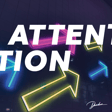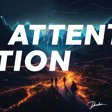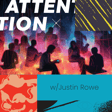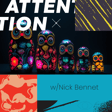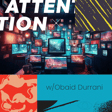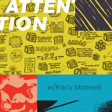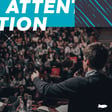Become a Creator today!Start creating today - Share your story with the world!
Start for free
00:00:00
00:00:01

Audience Growth Vs. Community Building... They're Not the Same
In this episode, Dan Sanchez talks about the differences between audience growth and community building as well as how they can come together to serve eachother.
Transcript
Introduction: Audience Growth vs. Community Building
00:00:05
Speaker
Welcome back to the Attention podcast. I'm Dan Sanchez with Sweetfish. So in this episode, I wanted to cover the differences between them, how they work, as well as how they can be used together in order to one, build a better community and two, grow a larger audience. So let's talk about how these two things are different.
Audience Growth Strategies: Insights from 'Tribes'
00:00:24
Speaker
Let's start with audience growth.
00:00:26
Speaker
and I'm going to be using one of my favorite marketing books of all time that was probably one of the first marketing books that impacted me as a young marketer when I was right out, probably 23, 24 years old, when I was transitioning to marketing called Tribes from Seth Godin.
00:00:43
Speaker
And a lot of the material I'm covering today actually comes directly from this book. I'll actually be quoting the book when talking about audience growth and community and what I say when both of them come together, Seth calls a tribe, right? But first, let's dive into one aspect of it and that is audience growth. Now, audience growth
00:01:02
Speaker
is a one-to-many relationship. Essentially, somebody has something to say to a group of people with similar interests, or maybe a common problem, or maybe a common goal. In the book Tribes, Seth Godin says, the secret of leadership is simple. Do what you believe in. Paint a picture of the future. Go there. People will follow.
00:01:27
Speaker
This is a great description of audience growth. It's also a great description of what leadership is, because honestly, to grow an audience, you do need to lead the way forward, especially in a B2B case where you're trying to educate people on a better way of doing something. When you're trying to say, hey, if we're stuck over here, what if we go over there? It is much better. This way of thinking, this methodology, this framework, this question that we can pursue together is better. And that's what it takes to grow an audience.
00:01:57
Speaker
to have a compelling story that resonates with a group of people so that you can guide them to that place. Generally, in order to do this well, you need to have a deep understanding of the group of people and address their problems with solutions in a helpful, hopefully interesting way. The only other thing you need is a way to reach them all, a way to get your ideas and your thoughts
00:02:21
Speaker
in front of them, right? And that's why we have social media, email, SEO, YouTube, right? Podcasting. These are all the different channels people are using in order to grow an audience, in order to distribute their thoughts, their ideas and solutions to the problems of the group.
Engagement: Passive vs. Active Audiences
00:02:42
Speaker
Now if you have a lot of people listening to those ideas and listening to those thoughts, congratulations, you have an audience. That's all you need is the attention of a group of people. Just like speaking on stage with a microphone, it's a lot of people focusing into one person's message.
00:03:01
Speaker
Now there's another level of audience growth that isn't required, but it certainly makes for a better audience, and that is what I'm calling an engaged audience. In an unengaged or passive audience, it's just one person speaking to many people. Maybe you have a thousand people you're speaking to, but with an engaged audience, a good percentage of those people are talking back.
00:03:25
Speaker
In my experience, it's usually about 9, 10% of the current audience will actually engage with you, but that is an engaged audience. On social media, it looks like them replying to your post. In email, it looks like them replying to your email. On a podcast, well, it's hard to have an engaged audience via podcast, so usually you have to take it to other channels unless you have a way for them to call in to a live
00:03:49
Speaker
show or submit questions or something like that. In YouTube, it's the comments or maybe doing collaborations with other people that are in your audience. There's many ways to have an engaged audience where it's not only the leader speaking to the audience, but it's the audience speaking back to the leader so that there's a little bit more of a dialogue there.
Understanding Community Dynamics
00:04:09
Speaker
All that being said, neither of these things are community. Community is a little bit different, so let's talk about what community is.
00:04:18
Speaker
Now community doesn't need a leader. In fact, there's many communities out there that have no leader. It's a self-regulated group of people, usually with a similar interest, interacting about some kind of goal, interest, commonality, like they all live in a close proximity, geography, are interacting on Reddit on a certain topic. There's many communities that are out there and they're working in collaborating with each other on some kind of topic.
00:04:48
Speaker
And if you think about it, you are probably in multiple communities already. You're interacting with groups and there may or may not be a leader in this group. Again, in Seth Godin's tribes, he says that a group only needs two things to be a tribe, a shared interest and a way to communicate.
00:05:08
Speaker
before a lot of these communities were limited to geographic bounds. But because of the internet and because there's so many different ways to communicate with people around the world now, we've seen so many different pockets and different communities pop up around interest and niche interest and niche niche niche interest, right? Like the smallest niches can now find them
00:05:30
Speaker
find each other and collaborate and have conversations and debate different topics of their tiny little niche. They're all over the place. And there's also communities with leaders.
Building or Joining Communities as a Marketer
00:05:43
Speaker
You can either go and create your own community and thus be the leader of the community or you can go and be integrated into an existing community.
00:05:52
Speaker
So you can actually build communities different ways as a marketer. Again, you can build one, or you can go and find and become and integrate into one. Hopefully not just going in and promoting over and over again, actually listening, engaging, being helpful and building respect in an existing community. They exist all over. If you're curious about where to find them, go to Reddit, go to Facebook groups. There is active communities that are loosely put together on LinkedIn,
00:06:20
Speaker
but because of similar connections and followers, they overlap quite a bit. As a marketer, I have connections to many other marketers on LinkedIn, and I don't hear so much about what's going on in the sales world as much, a little bit. There's a lot of overlap there. I see sales posts, but I see more marketing posts than anything else because I have a very marketing-centric community going on on LinkedIn.
00:06:40
Speaker
So, many different communities out there and the work you do to develop one or nurture one or integrate in and influence one is very different from the work you do to build an audience. One is about you talking, the other one is about the connections between the members.
Creating a Tribe: Combining Communities and Audiences
00:06:58
Speaker
Now again these two things go hand in hand and Seth Godin says when you have both an audience and a community you have a tribe because the audience again is just the leader speaking to the group and maybe it's an engaged audience with the group speaking back to the leader and it becomes a tribe an audience slash community when not only is a leader and the audience speaking back and forth to each other
00:07:26
Speaker
but the community starts to communicate with itself. That's the key and that's the difference. You don't need it to be an audience, but you do need that community engagement in order to be a community, right? The community members need to talk to themselves without you, without you facilitating it necessarily. They need to be able to interact and maybe you can give them a space to do it, but when they can interact with each other, you have a full tribe.
00:07:56
Speaker
And again, from Seth's book, he says, a tribe is a group of people connected to one another, connected to a leader, and connected to an idea. As marketers, you can make a much more engaged audience if you can build a community amongst the most passionate people in your audience around one idea, around one story, a narrative, a place that you're taking them. If you can get enough people on board,
00:08:25
Speaker
it can build a much larger audience because you're taking your most passionate audience members who are eating up everything you're saying and then letting them build something bigger than you could have just built by yourself.
Launching a Community with an Audience
00:08:38
Speaker
With one person you can do a lot, but with many you can accomplish even greater things because there's exponential returns when you have a lot of people working on one problem. Other skill sets can come to use beyond what you can contribute as a leader. And that's why I think it's worth
00:08:54
Speaker
developing an audience and a community. Now I will say it's a lot easier to launch a community if you have an existing audience. You can put things in place to make it easier for that audience to connect with each other. It's also okay to do it the other way around. You can build and engage an existing community
00:09:12
Speaker
or build or engage an existing community, develop trust within them and to begin to slowly start to lead them. But it takes time. You have to contribute a lot of value before you can actually just take over a community. And honestly, it's not really taking over. It's really just subtly influencing in small nudges and then pulling them rather than pushing them towards a common goal.
00:09:38
Speaker
So hopefully this episode has been helpful in clearing up the misconception between audience growth and community building. They're different things, but of course they go better together to build what Seth Godin would call a tribe. I highly recommend checking out this book. It has been a staple for me and many others across the marketing community.
00:09:58
Speaker
And I think it's a book that's bigger than marketing, right? It's a book about ideas and how they spread and how to essentially create change in either a small way or large ways. The mechanics are the same.
Podcast Promotion and Listener Engagement
00:10:11
Speaker
If this podcast has been helpful to you,
00:10:14
Speaker
please go and leave it a five star rating. It means the world to me for every time someone goes and leaves some votes. And even if it's not a five star, give it the number of stars you think it's worth. Um, you don't have to leave a review if you do fantastic, but both Apple podcast and Spotify now make it easy to give a star rating of some kind. So please, whichever app you're in, if you could go leave a rating that would bless this show tremendously in order to get discovered on either of those platforms. Thank you.


